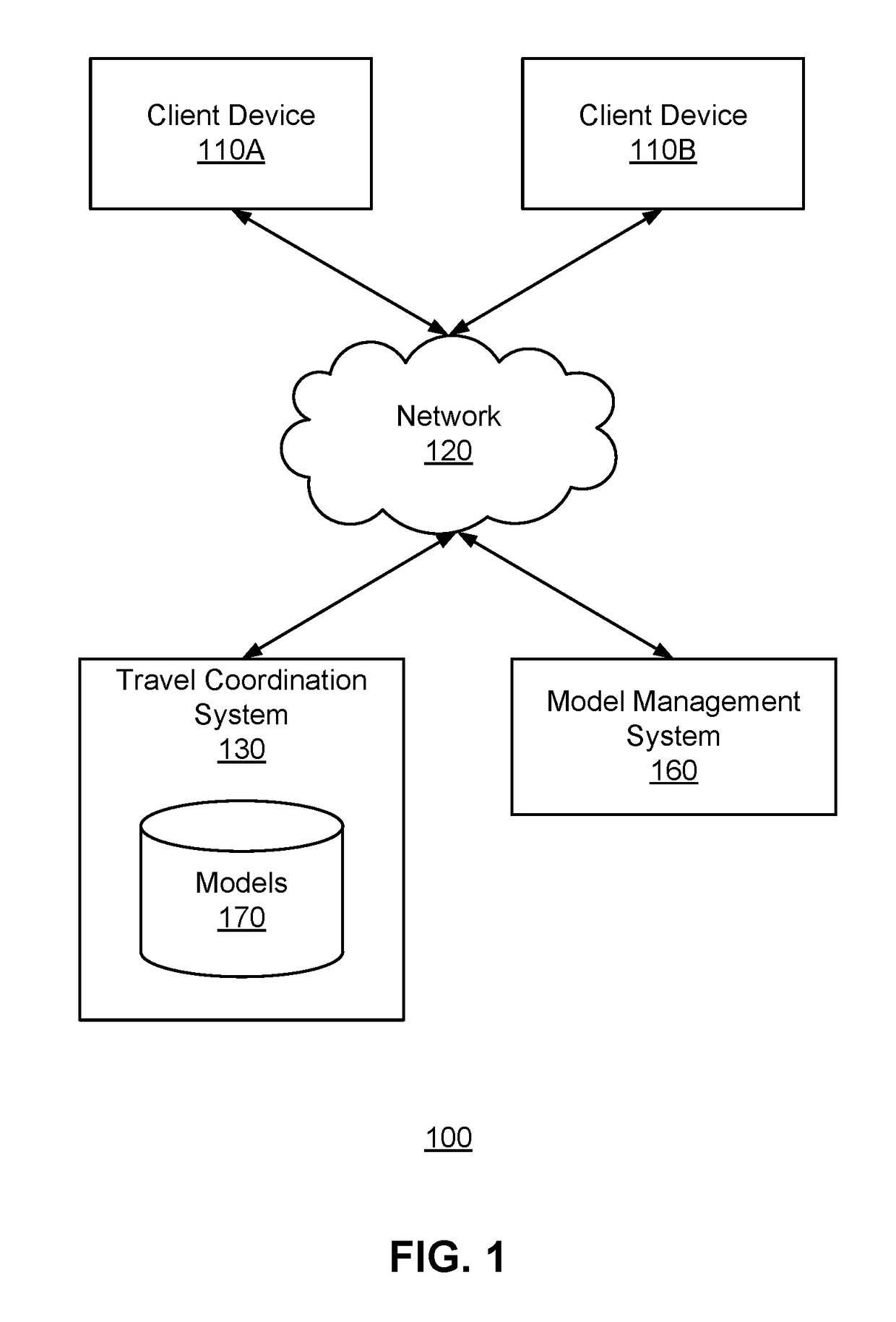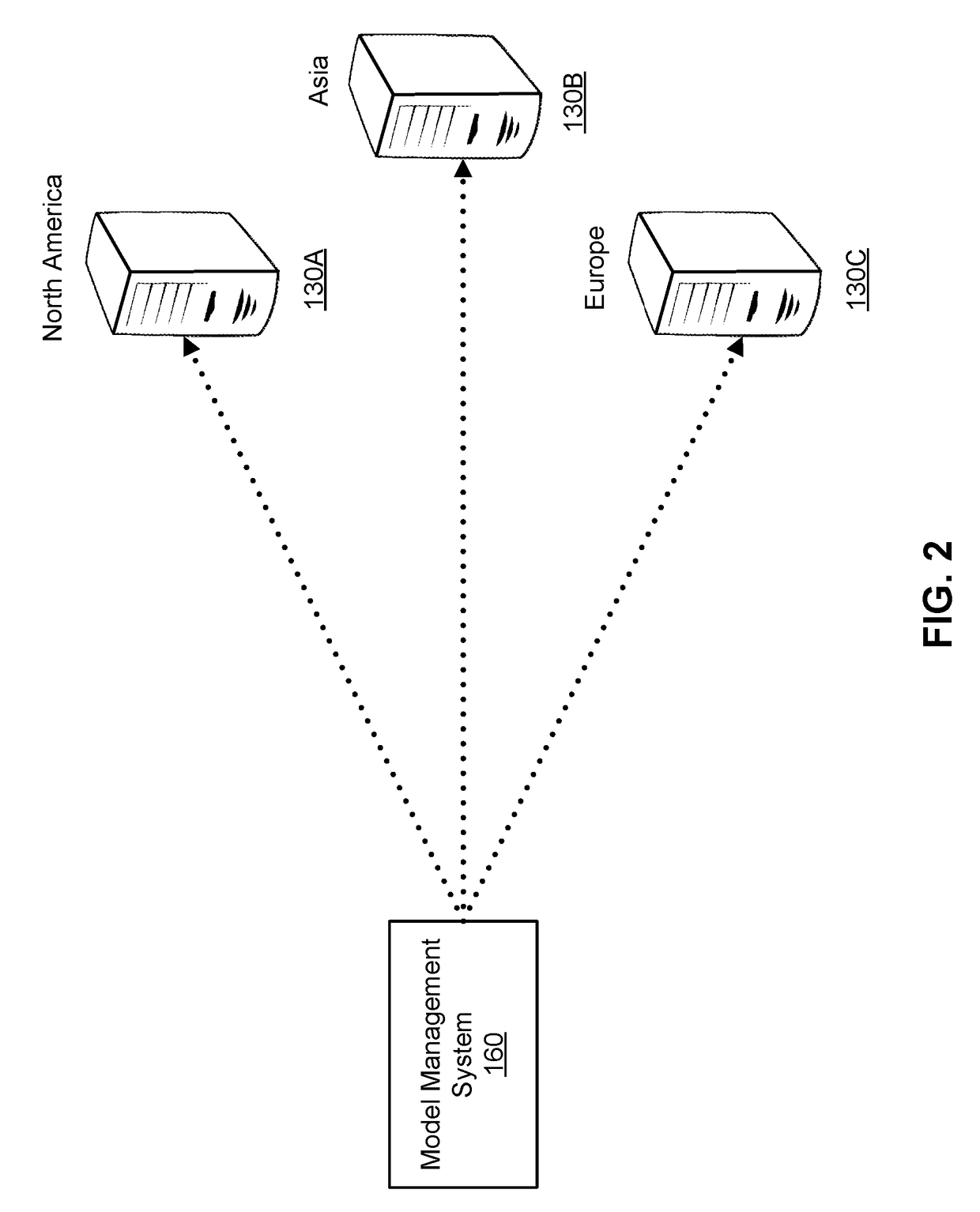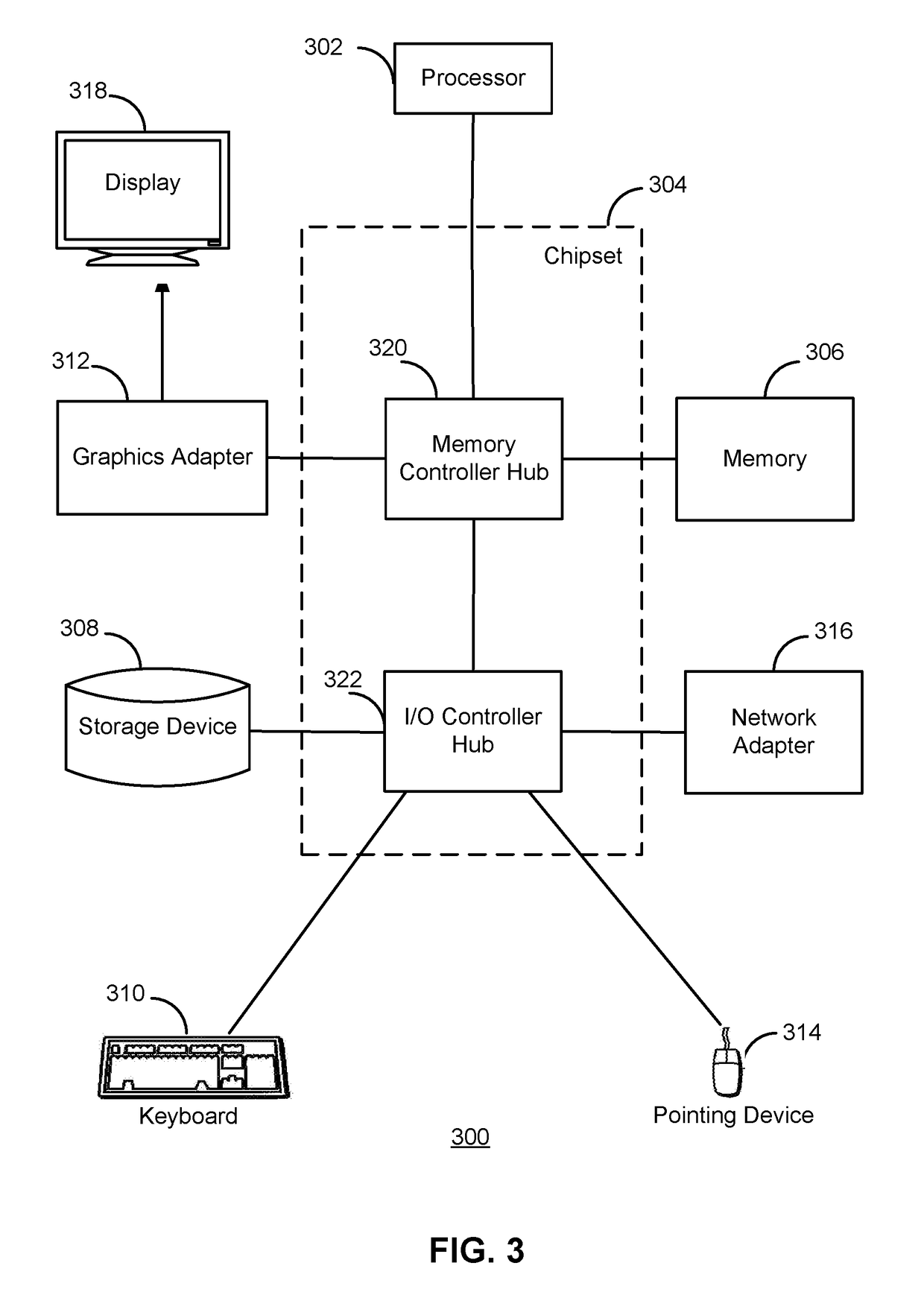Selective distribution of machine-learned models
a machine-learning model and distribution technology, applied in the field of machine-learning model making predictions, can solve the problems of computational intensiveness of generating such predictions and difficulty in providing computing resources used to make such predictions
- Summary
- Abstract
- Description
- Claims
- Application Information
AI Technical Summary
Problems solved by technology
Method used
Image
Examples
Embodiment Construction
[0012]Reference will now be made in detail to several embodiments, examples of which are illustrated in the accompanying figures. It is noted that wherever practicable similar or like reference numbers may be used in the figures and may indicate similar or like functionality.
[0013]FIG. 1 is a high-level block diagram of a system environment 100 for a travel coordination system 130 and a model management system 160, in accordance with an embodiment. FIG. 1 includes a client device 110A, a client device 110B, a network 120, the travel coordination system 130, and a model management system 160. For clarity, although only the client device 110A and the client device 110B are shown in FIG. 1, embodiments of the system environment 100 can have any number of client devices 110, as well as multiple travel coordination systems 130 and model management systems 160. The functions performed by the various entities of FIG. 1 may vary in different embodiments.
[0014]A user can interact with the tr...
PUM
 Login to view more
Login to view more Abstract
Description
Claims
Application Information
 Login to view more
Login to view more - R&D Engineer
- R&D Manager
- IP Professional
- Industry Leading Data Capabilities
- Powerful AI technology
- Patent DNA Extraction
Browse by: Latest US Patents, China's latest patents, Technical Efficacy Thesaurus, Application Domain, Technology Topic.
© 2024 PatSnap. All rights reserved.Legal|Privacy policy|Modern Slavery Act Transparency Statement|Sitemap



